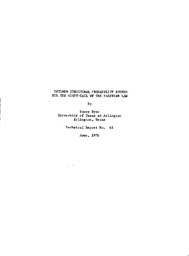| dc.contributor.author | Dyer, Danny D. | en |
| dc.date.accessioned | 2010-06-01T18:37:13Z | en |
| dc.date.available | 2010-06-01T18:37:13Z | en |
| dc.date.issued | 1976-06 | en |
| dc.identifier.uri | http://hdl.handle.net/10106/2197 | en |
| dc.description.abstract | **Please note that the full text is embargoed** ABSTRACT: The two-parameter Pareto density function [see PDF for equation] is widely used in applied statistics. For example, in reliability theory (1.1) represents the failure-time distribution of a "work-hardened" component whose.hazard function is inversely proportional to time. Because of its long right-tail, (1.1) is often a probability model for certain socioeconomic phenomena (e.g., distribution of city population sizes, distribution of personal incomes which exceed tax-exempt levels). One
of the more recent characterizations of the Pareto distribution is due to Revankar, et. at. [15]. They show that within the population of individuals that under-report their income for income tax purposes, the average under-reporting error for a given reported income is a linear function of the reported income if and only if the distribution of incomes in the population follows a Pareto distribution. | en |
| dc.language.iso | en_US | en |
| dc.publisher | University of Texas at Arlington | en |
| dc.relation.ispartofseries | Technical Report;41 | en |
| dc.subject | Pareto distribution | en |
| dc.subject | Applied statistics | en |
| dc.subject | Structural model | en |
| dc.subject.lcsh | Mathematics Research | en |
| dc.title | Optimum Structural Probability Bounds for the Right-tail of the Paretian Law | en |
| dc.type | Technical Report | en |
| dc.publisher.department | Department of Mathematics | en |

